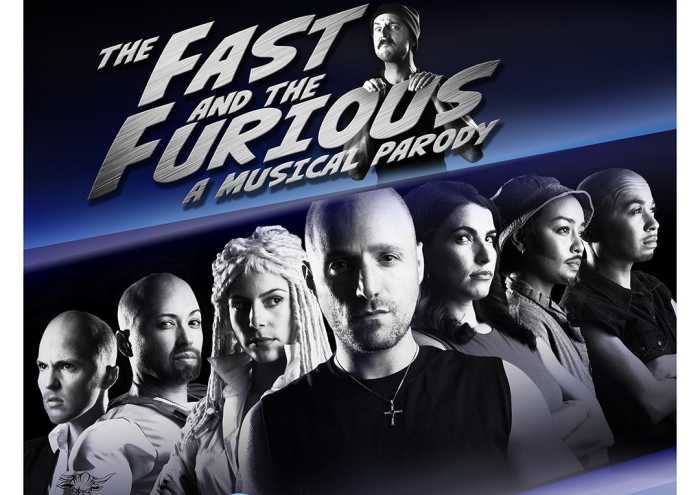Peter Bogdanovich says he’s been busy. Fourteen years after “The Cat’s Meow,” his last fiction feature, the legendary filmmaker’s released “She’s Funny That Way,” a new screwball comedy with Imogen Poots, Owen Wilson, Jennifer Aniston and more.
In between, he’s published a bestseller (“Who the Hell’s In It: Conversations with Hollywood’s Legendary Actors”), made two specials for television (on Natalie Wood and Pete Rose), made a four-hour Tom Petty doc (“Runnin’ Down a Dream”) and acted on “The Sopranos,” one episode of which he directed.
“That’s a lot of work,” he tells us. Still, he’s happy to be back in the game, especially with a film that taps into a retro style of filmmaking that was retro even back in 1972’s when he made “What’s Up, Doc?”
I would imagine for modern actors the screwball comedy style can be very difficult. How did you describe it to the cast?
Owen Wilson said he didn’t like screwball comedy, so I said it wasn’t a screwball comedy.
What about with everyone else?
I just said it was a comedy. There’s a certain tempo that’s required when you do any comedy, really, particularly these fast-paced comedies. It’s a little bit inspired by a fellow named Georges Feydeau, who wrote 28 farces and then went nuts. That’s more what we were thinking of rather than American screwball comedies. I’ve had a couple Feydeau comedies translated into screenplays. But he’s very hard to get translated. T.S. Eliot said poetry is “what is lost in translation.”
I talked to an actor who did a screwball section of a movie recently, and she said she liked it as an actor because there’s often lots of long takes. With long takes the actor gets some amount of control.
I asked Howard Hawks one time, we were talking about “His Girl Friday,” and I said I noticed the pacing is not in the cutting, it’s in the frame. And he said, “Yeah, because editing taste artificial.” And he’s right. You’re cutting from one shot to another to keep it going, keep it going, whereas if you hold on the scene the actors do the work for you. It’s riveting.
RELATED: Our review of Peter Bogdanovich’s “She’s Funny That Way”
Some places have said the original incarnation of “She’s Funny That Way” was a film you were going to do in the ’90s with Tatum O’Neal.
Oh, no, no, no.
That’s not true?
No, that’s not true. We didn’t even write this, Louise [Stratton] and I, until around 1999, 2000. That was a very difficult period in our lives. We said, “Why don’t we cheer ourselves up by writing a comedy?” We had two ideas. One was the “squirrels to the nuts” line [from Ernst Lubitsch’s “Cluny Brown”], which was going to be the title of the picture but which unfortunately got changed because everybody thought people might think it’s a kid’s picture. They could have just put a sign that said, “This is not for kids.”
The other thing was I thought it might be interesting to do a comedy about a guy who pays a hooker to stop being a hooker. That came from when we were doing “Saint Jack” in Singapore in ’78 — one of my favorite pictures. It was based on Paul Thoreaux’s novel, which was about pimps and whores and madams. Once we got there we did a lot of research. We used three or four real escorts in the movie. A couple of them really touched me — no pun intended. One of them was from Malaysia, Mary, and she wanted to go home. She’d been fooled into coming there and her boyfriend dumped her on the street. It’s a sad story. We used her in the picture. She was quite good in the picture. Then we gave her some extra money to go home and quit the business, which she did. I haven’t heard from her but I know she left Singapore. I thought it would be interesting to make a comedy about a guy who pays certain hookers to stop being hookers and do something else.
It’s interesting to think a lighthearted picture was born from real anguish.
Someone once said to Feydeau, “The plots of your comedies are very dramatic and very sad.” Feydeau’s response was, “The comedy comes out of tragedy.” I once asked Howard Hawks about “Bringing Up Baby.” I said, “It’s pretty dark. It’s almost like a drama.” And Howard said, “Well, it is a drama. It’s a drama that happened to be funny.”
Two of the producers on “She’s Funny That Way” are Noah Baumbach and Wes Anderson. How did you first meet them?
My first wife, Polly Platt, long after we divorced, she was the first person to get Wes Anderson a picture. They were doing “Bottle Rocket” in Texas, and Polly Platt, she says to me, “This guy Wes Anderson is the first director since you who knows what he wants and won’t take any substitutes.” She said, “He’s a big fan of yours and he wants to meet you.” We met and we got along very well. He asked me to look at the first cut of some of his pictures. And Noah wrote to me in ’97, just after I got back to New York, and said he wanted me to play the role of the therapist in a picture he was making called “Mr. Jealousy.” We hung out a lot. And then Wes and Noah met independently of me and worked together. Occasionally all three of us get together. I call them “my sons.” They call me “pop.”
RELATED: Peter Bogdanovich talks about acting in other people’s movies
You’ve been involved in the construction of “The Other Side of the Wind,” which would have been the last film Orson Welles directed but which has never been put together due to a nightmare of rights issues. There was recently a failed Kickstarter campaign to help the project out.
They have the money. That’s not the issue. The issue always has been and still is the rights holders, who don’t always pull in the right direction. Last I heard, which was a couple weeks ago, we were to start editing in late September. Orson asked me at lunch one time in the ’70s, he turned to me out of the blue and said, “If anything ever happens to me I want you to promise me you’ll finish the picture.” And I said, “Jesus Christ, Orson, why would you say something like that?” He said, “I know, nothing’s going to happen to me. But if it does I want you to finish the picture.” So that was in ’75 or so. He died in ’85. I’ve been trying to finish it ever since.
You have another movie you’re making called “One Lucky Moon.” Can you talk about that?
Yeah, I can talk about it, I’ve got nothing to hide. I’m going to do “One Lucky Moon” but not immediately. I’m going to do another film first called “Wait for Me.” It’s a comedy-drama-fantasy, because there are ghosts in it. It’s something I’ve been working on for more than 30 years. I think I’ve finally got it right. It’s gone through many versions and drafts. But it was the first idea that sprang to mind after a little tragedy we had here in the family. In November of ’80 I thought it might be an interesting idea. I don’t think I wrote a script until the end of the ’80s. Originally it was for John Cassavetes to play the lead. But John was very ill. He died in ’89. But I sent him the script, which was an early draft, and he gave me some notes. And for the rest of the time before he died, he’d say, “Are you going to make that picture?” I said, “Yeah.” He said, “You better make that picture.” And then when he was very close to dying, one of the last things he said to me was, “Listen, kid, you better make that picture, because you know what? I’ll be there.”

























